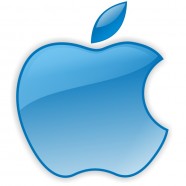Iphone news
The next iPhone will feature a smaller dock connector with a radically different form factor than the one we’ve come to know over the last years.
The latests reports and rumors point to Apple replacing the current 30-pin connection with a 19-pin connection. By losing 11 pins, Apple can make its long-running proprietary connection smaller, which opens up all kinds of design possibilities.
It will give the iPhone’s components more elbow room. Yet the new connection is likely to cause some problems for consumers who have invested in accessories based in the old design over the years. In short, really old accessories are probably not going to work very well. But of course, really old accessories often already have connection issues with the newest iPhones. Newer accessories should work, but will require some sort of adapter.
Design aesthetics aside, as far as connections go, the 30-pin connection is long in the tooth. Introduced with the third-generation iPod in 2003 as a replacement to the iPod’s Firewire port, the 30-pin connection has been adopted by nearly all of the iPods and all iPhones and iPads. The connection’s size is a result of Apple’s desire to allow backward compatibility with legacy analog connectors, and Apple’s own Firewire connection. Those legacy connections lower the cost of third-party hardware. Building fully compliant USB docks is expensive.
But there’s a different financial issue at play for consumers, many of whom have been hoarding speakers, alarm clocks, keyboards, external battery packs, cases and an untold number of cables over the past nine years. If Apple decides to move to a smaller connection, its new devices won’t fit all those existing accessories. However there should be ways to make your current accessories work with the new iPhone, iPad, and iPods, although you may have to shell out a couple of bucks to do so (well, probably).
Apple could remove many input/output connections without making your next iPhone speaker prohibitively expensive by discarding legacy features that no one uses anymore. A quick check of the 30-pin connection shows seven pins that could be removed if Firewire support were annihilated.
If the remaining pins on the 19-pin connection mirror the current features, it’s just a matter of creating a adaptor that redirects relevant I/O pins to the new system. Of course, with the removal of some features, some accessories could display odd behavior, or stop working all together.
To add more fuel to the adaptor fire, iMore is reporting that Apple will introduce an adaptor that will allow the new iPhone to work with old hardware. The report is unsure if Apple will include the adaptor with the purchase of the next generation iPhone, but it’s a good indicator that the move won’t render your current hardware worthless.
If Apple does decide to create a dock connection that won’t work with the current docks, there are other alternatives, at least for speakers. The Pear is a Bluetooth-enabled dock accessory that’s recently acquired more than enough funding to bring wireless audio to any 30-pin speaker. With the Pear’s Kickstarter success, expect more devices that perform the same function to hit the market.
Of course, all of this depends on if the rumors and reports are true.
And while it’s going to be a rough transition for many consumers, progress is like that. We survived the change from serial to USB; a loss of a few pins should be a cake walk. Plus, if you have legacy iOS device accessories, you probably have legacy iOS devices to plug into those speakers, alarms clocks and electric kettles.






